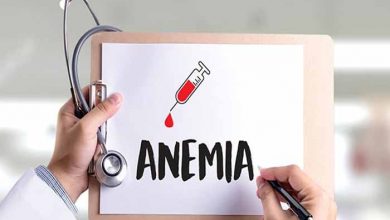THE STORY ABOUT ANGIOGRAPHY & ANGIOPLASTY

Medications, fasting, diet and the procedure — here’s everything you need to know about before going for an angiography and angioplasty.
Angiography
If you have chest pain, difficulty in breathing or feeling of uneasiness, then it is the best thing to go to a doctor and get tested. And if the doctor suspects any heart problem or blockage in the heart, then he will recommend angiography to know the number and percentage of blockages. However, not many people know what to expect if they are planning to go for an angiography.
1. Most people ask about what medications one should stop having before going for an angiography. Well, it is advised that if you are diabetic and taking drugs, then you should stop it on the day of angiography. However, if you are taking blood-thinning medications, then it has to be taken.
2. If you are planning to go for an angiography, you need to fast for around two hours before the procedure. And hence, one should have a light breakfast on the day of angiography and not eat a heavy meal or breakfast.
3. Angiography usually takes around 15 20 minutes as it only involves detection of any clots in the heart, which block the blood flow. Hence, knowing about it might help you to be prepared for the procedure.
4. During the process, you will be given only local anaesthesia, which means that the patients are aware of what is happening unlike general anaesthesia, where you do not know what is being done. So take your time and let the doctor if you are not ready to undergo the procedure.
5. Once angiography is done and if the doctor s decision is to undergo angioplasty, then it is advised to do it in the same sitting (at that particular moment). This is because the tube is already inserted into the heart and only a wire has to be passed through the tube for angioplasty. In simple terms, angiography is the first step of angioplasty.
6. If, by any chance, the patient or the family member or relatives say no to undergo the procedure, then the tube is removed, the patient is sent home and asked to come back again. And then the tube is again put in the body, which means the patient has to go through the entire process again.
7. If the angiography is done through the hand, the patient is ready to go home in two hours. Currently, this is the most preferred option unlike earlier where the tube was inserted through the groin. However, if the tube is put into the groin area, then you will have to wait in the hospital for around six to eight hours.
Angioplasty

When a person suffers a heart attack, ideally, treatment in the form of angioplasty must be provided within the first 1-1.5 hours (the golden hour). Anything beyond this time frame and the heart muscle cells are irreversibly damaged. This type of angioplasty is called a PAMI or Primary Angioplasty. If it is not possible to subject an individual to PAMI due to any reasons, then giving intravenous clot busters (thrombolysis) is an alternative. The success of clot buster medicine stands at about 55 per cent and the chances become even lesser if the patient reaches the hospital late. The most ideal time for delivery of the medication is said to be within the first 30 minutes after the onset of symptoms, usually diagnosed by an ECG. Although using clot busting medication is an easier option, it is not as effective as an angioplasty.
The cardiologist will use a stent to prop open the affected artery during an angioplasty and will help replace the lost blood flow. A stent is a steel or steel-like metal wire mesh scaffold to prop open the clogged blood vessel. There are different types of stents approved for use with the cost varying between INR 35000-INR 55000 (non-medicated stents) or INR 80000-INR 125000 (medicated stents). Bio degradable stents costs INR 270000-INR 285000 per stent.
What type of angioplasty is ideal?
Primary angioplasty gives ideal results. Called PAMI (Primary angioplasty In Acute Myocardial Infarction) It can prevent more than 50 per cent deaths, avoid repeated heart attacks and heart pump failure. An angioplasty requires an average of two to three days hospitalization followed by lifestyle modification, diet modification and proper medications. Also one has to maintain proper blood pressure, proper sugar levels & cholesterol levels.
How do stents work?

In a blocked segment of a blood vessel, they are deployed over a balloon. After deployment at a particular pressure the balloon catheter and wires are removed out but the stent stays expanded within the blood vessel keeping it widely open at that place. So it allows free flow of blood in a previously obstructed case.
How do doctors choose a particular type of stent?
The cardiologist usually chooses drug-eluting stents (stents which release drugs) if a person has a long segment block, when the vessel diameter is relatively small or if an individual is diabetic.
He/she chooses bare metal stents in the case of short focal blocks, in elderly patients (it may be unsafe to use dual blood thinners like aspirin and clopidogrel indefinitely). It is the stent of choice for acute heart attacks and for large diameter blood vessels as well.
Can a stent be removed after it has been inserted like other implants?
No. Once a stent is delivered or deployed it is not removed. Over a period of time it becomes an integral part of the vessel wall. Months later even if a small camera (angioscope) is passed through the vessel then the stent is invisible as it gets embedded into the vessel layer and normal cells grow over it covering it completely. This process is called as endothelisation. This process takes about a month to a year depending upon the stent type. It is very important to take dual blood thinners (Aspirin and Clopidogrel) until this time.
If I have a stent, is it something I have to worry about all my life?
Unfortunately, a patient who has had a heart attack becomes a heart patient for life. After an angioplasty, regular medication, lifestyle changes and regular follow-ups become mandatory for every patient. After a period, the doctor might reduce the number and concentration of drugs to be taken, but he/she will never advise you to stop basic drugs like aspirin and statins (cholesterol lowering drugs). It is unsafe to stop these drugs in the first year. Clopidogrel may be stopped anywhere after one or three years. However, depending on several factors, some doctors may prefer to continue combination of Aspirin and Clopidogrel for a long time.
When the patient has to undergo any other major surgeries while on the blood thinner medication, there is a risk of excessive bleeding. Ideally such surgeries should be planned in advance, and in case of emergent procedures, the patient should inform the surgeon about his/her condition.
Can a stent develop a clot or block again?
Yes, there is a 1-10 per cent risk for stents to get re-blocked. It is not because of the techniques or the material used, but the natural functioning of the body in some people.
How can one reduce the occurrence of these blocks?
Modification of lifestyle, changing the diet, regular exercise, regular medication and meticulous follow-up with a cardiologist or a physician can help you effectively minimize the chances of recurrence of a block.
If a stent is re-blocked, what are the treatment options available?
The only option is a repeat angioplasty procedure which may be just a balloon dilatation with either a routine angioplasty balloon or with a specialized drug eluting balloon (DEB). Majority of times if the vessel size permits it, then another stent is deployed within – stent within a stent.
Why are stents so expensive? Are there any cheaper options?
Stents are life-saving smart implant devices and are currently not manufactured in India on a large scale. Because they are imported, they are expensive. Government levies tax, VAT and octroi (now LBT) which further adds to the cost.
What are the complications of angioplasty?
The major risk or complications of angioplasty include bleeding or hematoma (collection of blood) at the punctured site, sudden abrupt closure of artery with fresh clot, heart attack requiring an emergency CABG (or bypass graft procedure) and rarely death.
What are the benefits of angioplasty over bypass surgery?
Fewer chances of infection, short recovery period, short hospitalization, negligible blood loss, rare blood transfusion are the advantages of angioplasty. Patient can resume all physical & mental activity within seven days.





